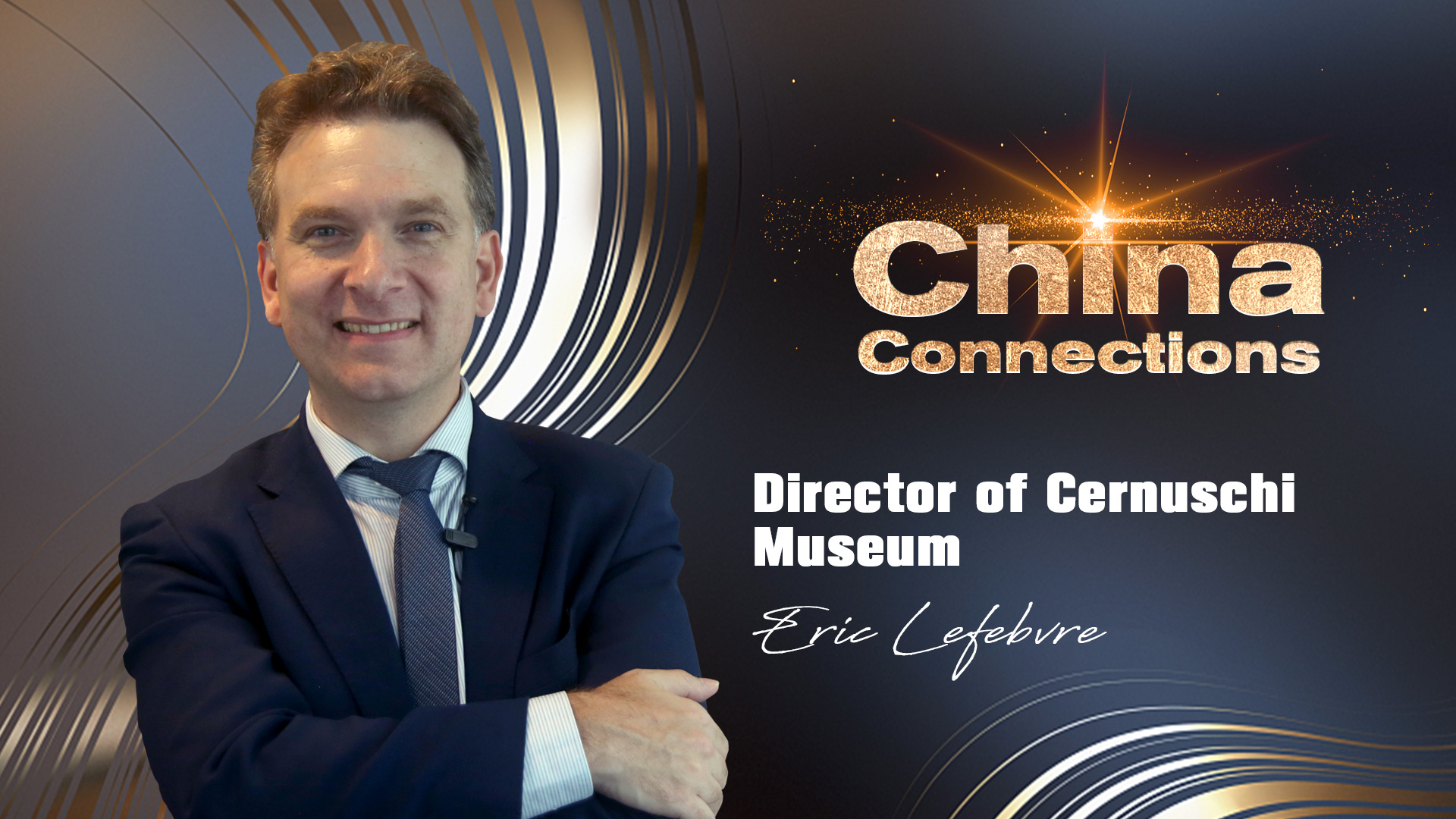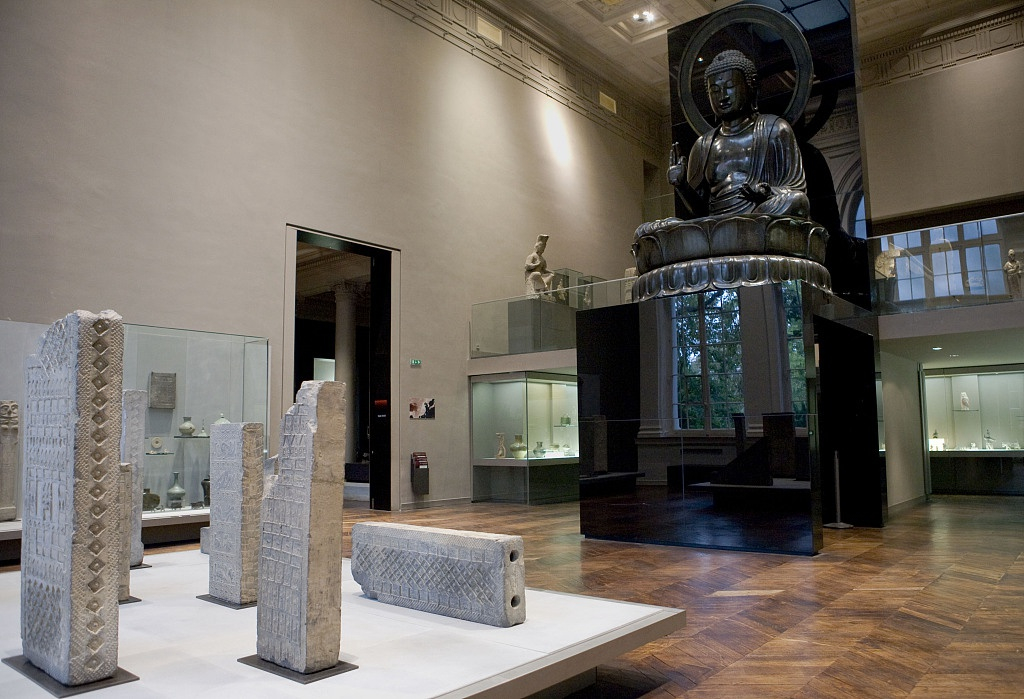06:08

"Language helps to open many doors, not only related to arts, which was my first purpose, but also various aspects of culture and human relationships," said Eric Lefebvre, director of the Cernuschi Museum.
Lefebvre is a native French but also speaks fluent Chinese, and is quite familiar with many Chinese museums, as well as their collections.
He also has a Chinese name – Yi Kai.
Cernuschi Museum, founded by Henri Cernuschi, is an Asian art museum. It has a history of around 140 years, from which one could see how the Western view of Asian art changed. It has co-operated closely with several Chinese museums including the Shandong Museum and Shanghai Museum to showcase bronze ware and Buddhist statues.

The Cernuschi Museum in Paris, France. /VCG Photo
The Cernuschi Museum in Paris, France. /VCG Photo
Experience culture in museums
Lefebvre himself is also an enthusiast of Chinese cultural relics, as well as artistic works due to his special relationship with China.
While talking about exchanges in museums, Lefebvre said the most important role for museums is to provide an environment, in which visitors could experience the culture by close contact with the relics.
"Some visitors from France or Europe don't know where is Shandong, and where is Qingzhou. They don't know much about Buddhism. But somehow, the objects are so magnificent and important that they can feel it," said Lefebvre. "Sometimes, it opens doors and windows to a lifetime of interests."
He values the direct contact between people and the relics or artistic works on display. For instance, even though he considers that it's necessary to use new technologies to give visitors a different experience, he still thinks seeing the real object is important.

Eric Lefebvre, director of the Cernuschi Museum, is receiving an interview. /CGTN Photo
Eric Lefebvre, director of the Cernuschi Museum, is receiving an interview. /CGTN Photo
"Just like in the Louvre, and for Mona Lisa. You see that people just raise their iPhone to take a picture, they don't really look at the painting. They take a picture, put it in their pocket and walk away," he said. "We don't want that."
For Lefebvre, personal experience is always important, not only for art but also for cross-cultural communication. He recounted his understanding of the Chinese New Year, which has become increasingly popular in France in recent years.
"When I was young, I couldn't even hear about the Chinese New Year in French media," he said. "In recent years, when I go to the station to take a train in the morning, I hear people playing Guqin, and they offer me a cup of tea."
He said that the celebration is so widespread from the train stations to streets, that he could tell from the people around him that they were touched, by hearing a sound from the past and a distant place in a familiar environment, and by having a cup of tea.
"I can see the start of something which create a human relationship that could develop," he added.
Museums open doors, bringing people closer to a different culture – to hear, to see, and to experience.
Or, in another words, museums provide the possibilities and plant seeds, which one day may grow into a tree, linking different cultures and people of different countries.
Reporter: Ai Yan
Videographer: Ai Yan
Video editor: Ge Kai
Graphic designer: Gao Hongmei